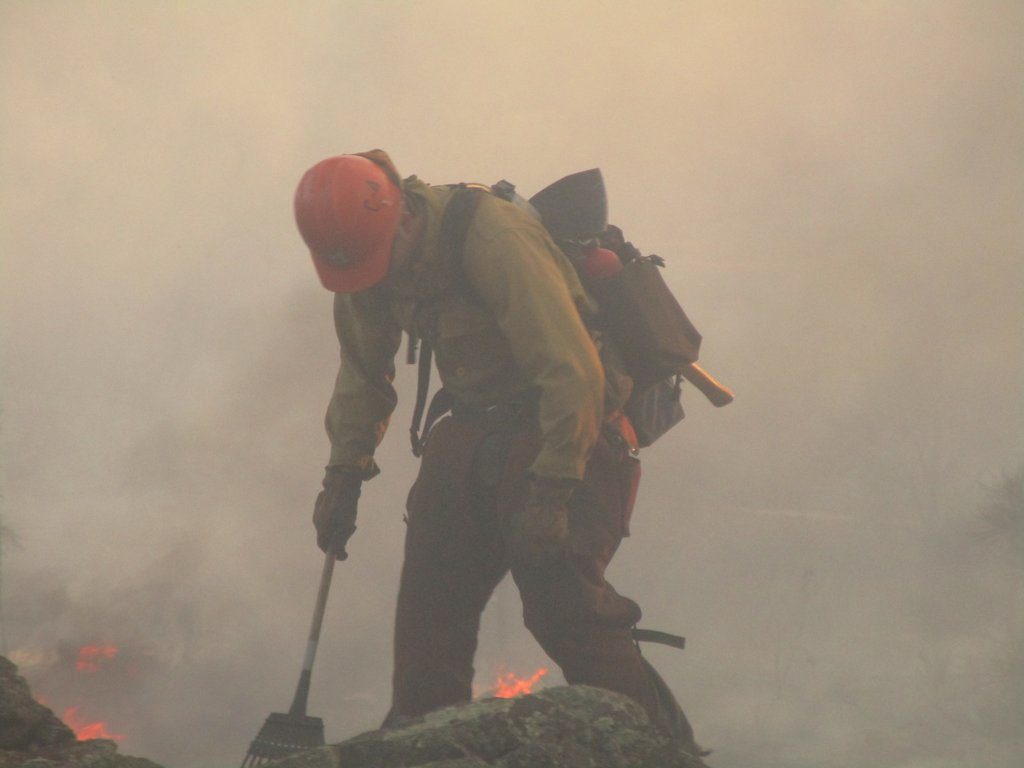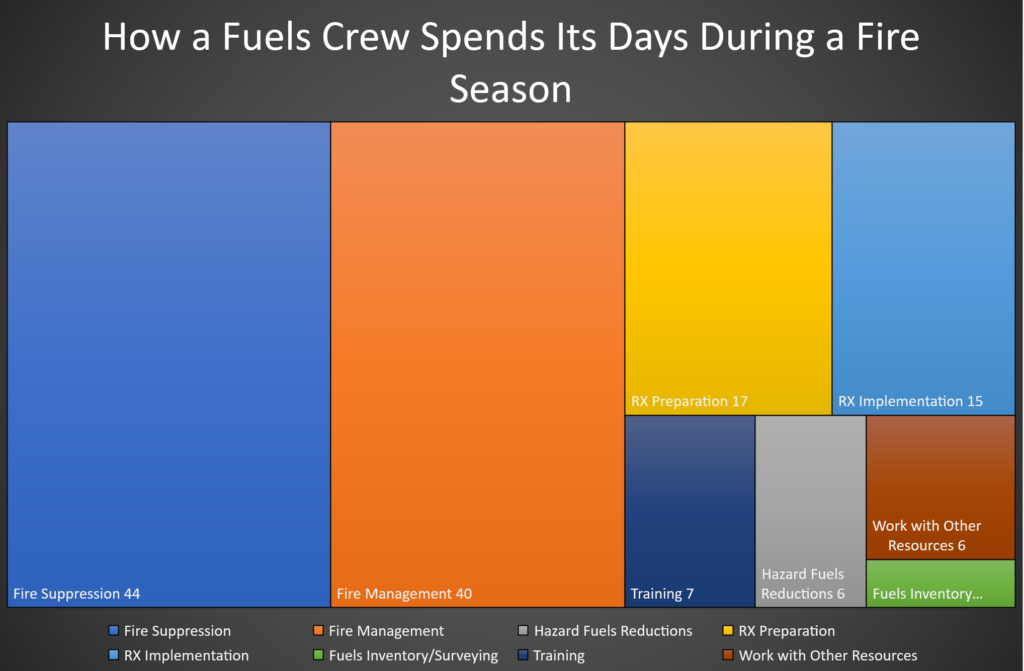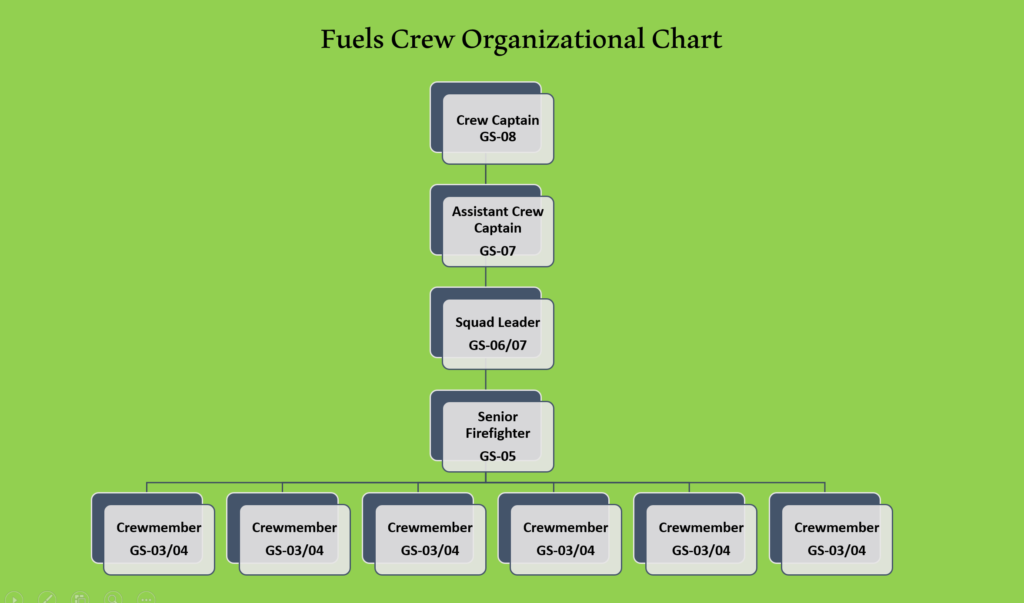
For decades, fire managers believed that all wildland fires should be suppressed by 10am the following morning. Known simply as the “10am Policy”, this belief in total suppression drove the decision making of fire managers for years. We now know that this approach was foolish and brash, and ignored the now universal scientific consensus about fire’s importance to certain ecosystems. While fire suppression policies have evolved over time, we are still dealing with impact of the 10am Policy in our wildlands. Millions of acres of land, which otherwise would have experienced regular, low-intensity fire, went decades without a start. Without the benefit of regular fire coming through and clearing out the understory, we have seen tremendous overgrowth in some areas, and this buildup in vegetation has fueled many of the monstrous fires we have seen erupt over the last few years.
It is the mission of a fuels crew to help restore order to our forests. They go out, every year, and work hard to reduce the amount of hazardous fuels present in our forests and grasslands. They play a key role in surveying our forests and documenting the forest’s health. They mark timber for timber sales, and they carry out fuel inventories. The data they collect gives fire managers the information they need to make smart, informed decisions about how fire will be utilized throughout the current season, and future seasons.
While the nature of this work may have fuels crews working deep in the backcountry one day, much of their time will be spent building and reinforcing defensible space in the wildland urban interface. What’s the wildland urban interface? It’s where the woods meets the towns. Fuels crews help treat the forests that are adjacent to a subdivision, or thin out brush beneath powerlines. They also will take steps to help protect culturally-important archaeology sites like the cliff dwellings in Mesa Verde National Park. Zion National Park has done a great job of documenting all the different projects their fuels crew has been involved with over the years. If you want some specifics, that’s a great place to start.
But coming back to the job. How exactly do you remove hazardous fuels? Well, for starters, there’s good old-fashioned brute force. If you want to get some time on the trigger of a chainsaw, you’ll love working on a fuels crew. Cutting down trees and mowing down brush with a saw is the most common mechanical method for reducing fuel loads. But you can also burn it too – in a controlled, prescribed manner of course! Which, lets be honest, is probably the most fun. Fuels crews are experts in preparing a site for a prescribed fire, handling the ignition, and monitoring the prescribed fire and making sure it doesn’t escape.
Because fuels crews will regularly be employed to work prescription burns, they need to be red-carded, and comfortable transitioning quickly from holding control lines, to cutting hotline around a spot fire. Fuels crews will also be called out as an initial attack resource on their local forest if required, and oftentimes will join forces with another fuels crew (or a wildland fire module, etc.) to form a twenty-person Type II handcrew available for off-forest assignments. Another way for fuels crewmembers to gain additional fire suppression experience is to join an engine/handcrew/hotshot crew as a detailer. Let’s say a hotshot crew only has 17 people available, and they need one more person in order to be eligible to travel off-forest for an assignment. They might pick up a detailer from a fuels crew for the roll. (Side note: If the opportunity ever presents itself for you to detail onto another crew, like a hotshot crew, and you have an interest in someday working either with that hotshot crew, or just with a hotshot crew in general, DO IT. It’s great experience, a great chance to network, and a great opportunity to see if you like the hotshot life and the crew’s culture.)
Fuels crews will also help with managing fires that have a resource benefit. While the fire’s start might not have been intentional (e.g. lightning start), the fire managers might decide to let it go for a bit, if there are not any structures or resources in immediate danger. A fuels crew, or a wildland fire module, would monitor the fire and keep it in check. They might document its progression using GPS, GIS, and cameras, and also note how thoroughly it is burning the fuel.
Like any other crew, there’s going to be a tremendous amount of variation between what a fuels crew does on the Coconino National Forest in Arizona, or the assignments that a fuels crew gets in Lake Tahoe. However, we came across some data, courtesy of Crew 4, a fuels crew on the Coconino National Forest in Arizona, that broke down the different tasks that they spent time on during their season.

As you can see, Crew 4 spent A LOT of time on initial attack and fire management. Honestly, this is probably towards the high end for any fuels crew, so bear that in mind.
Crew Structure
Generally, fuels crews are composed of ten firefighters. However, they can also be as small as 5-6 (e.g. Zion National Park Fuels Crew), or 15+. It just depends.

Where are the Jobs?
Federal, State, County, and Private
Entry Level?
Yes
Pack Test Required?
Yes, at the arduous level
Job Titles:
- Forest Technician (CAL FIRE)
- Forestry Aid – General
- Forestry Technician – Fuels
- Forestry Technician – Timber Sale Prep
Sample Job Descriptions
USFS Fuels Crew Job Description
Recommended Reading:
The Female Perspective: Katie Wimpari shares 21 Lessons Learned from her time as a wildland firefighter on a fuels crew in Arizona
A Reddit Thread Re: Working on Fuels Crews